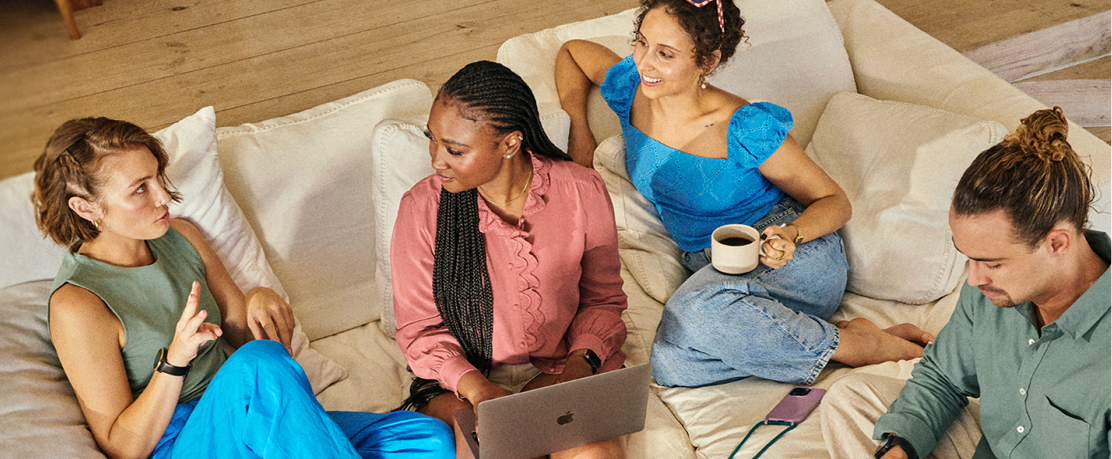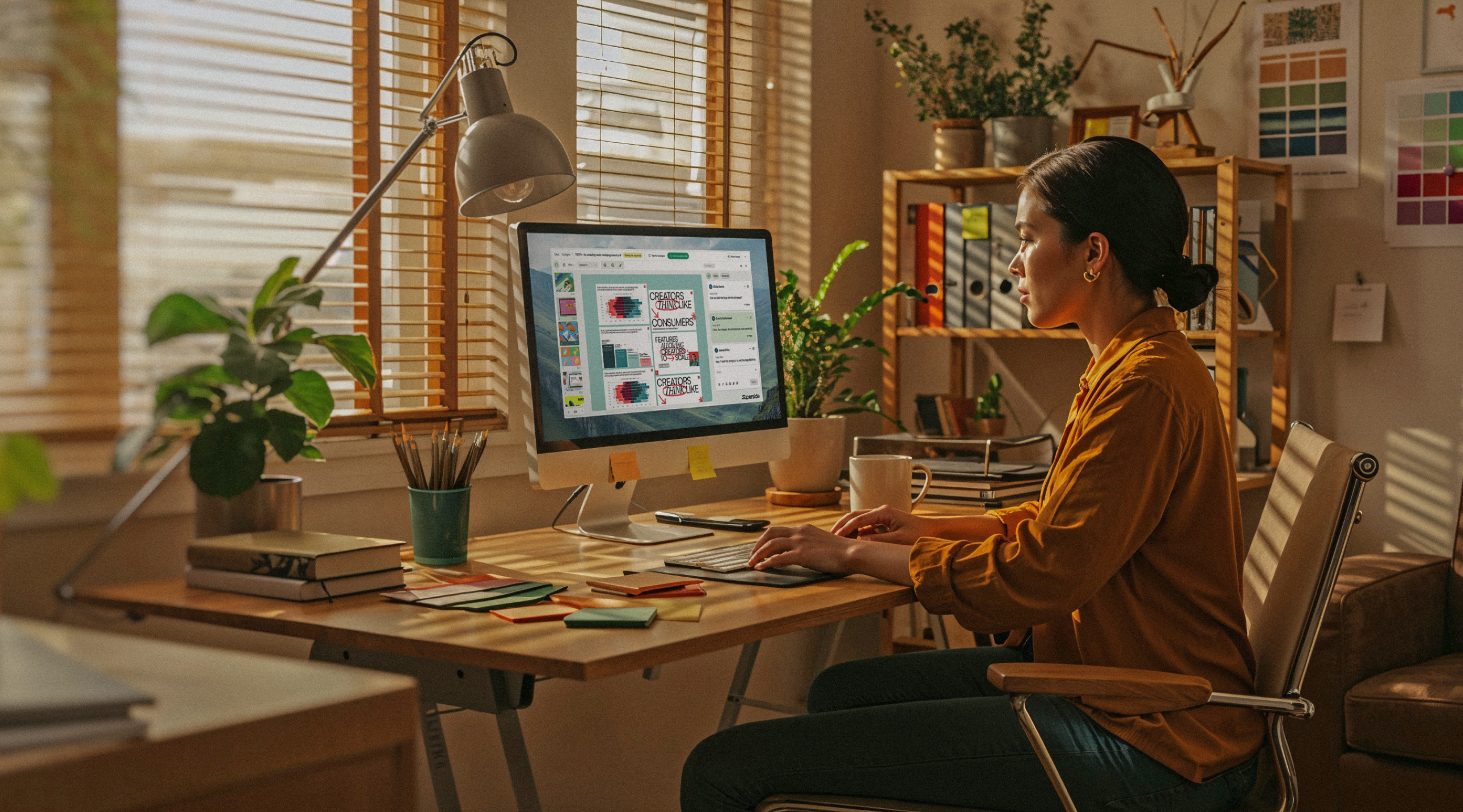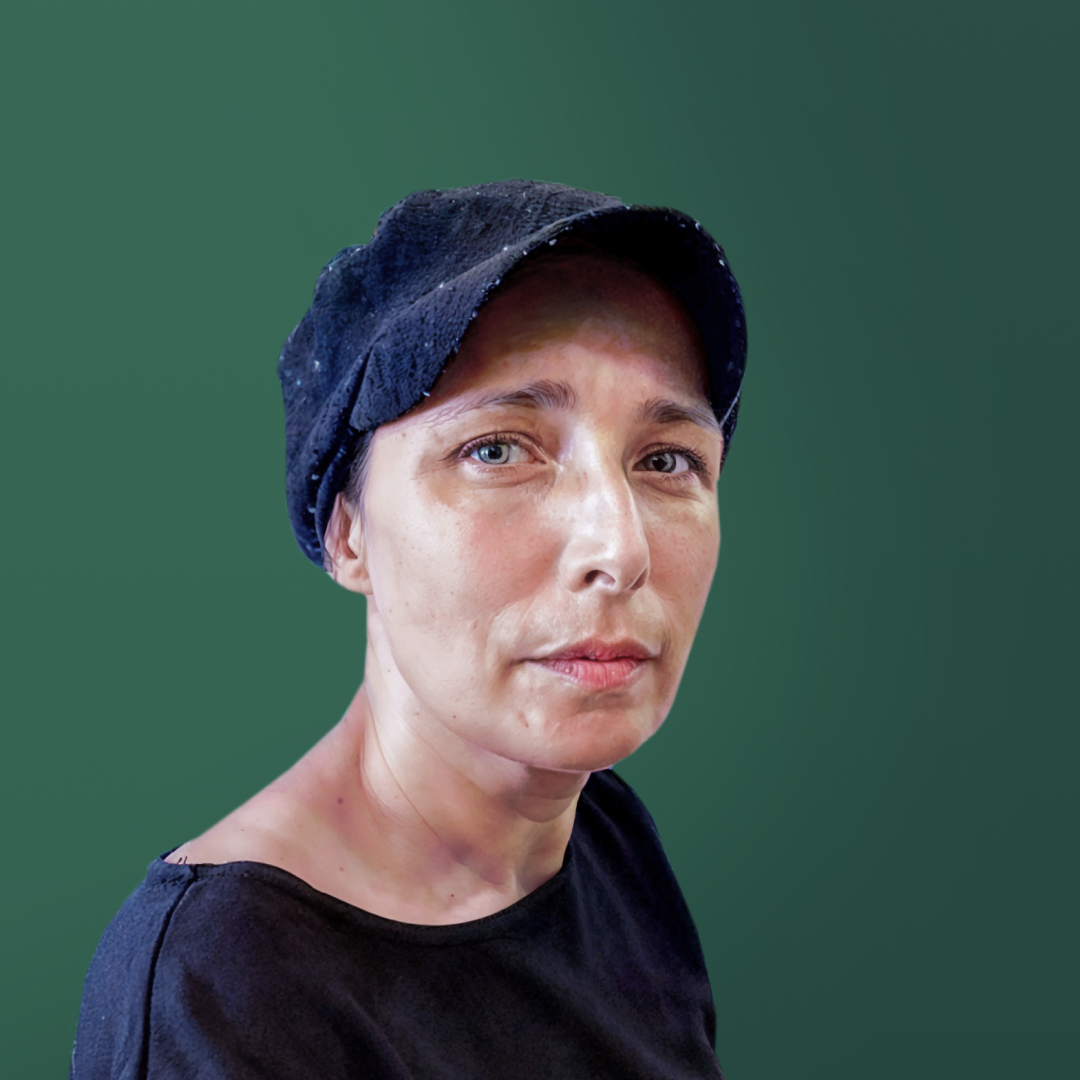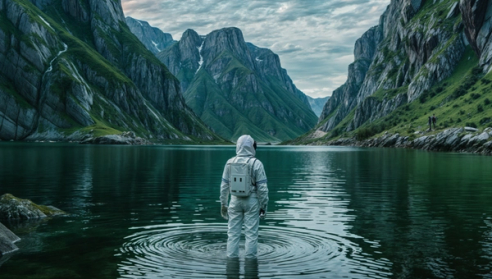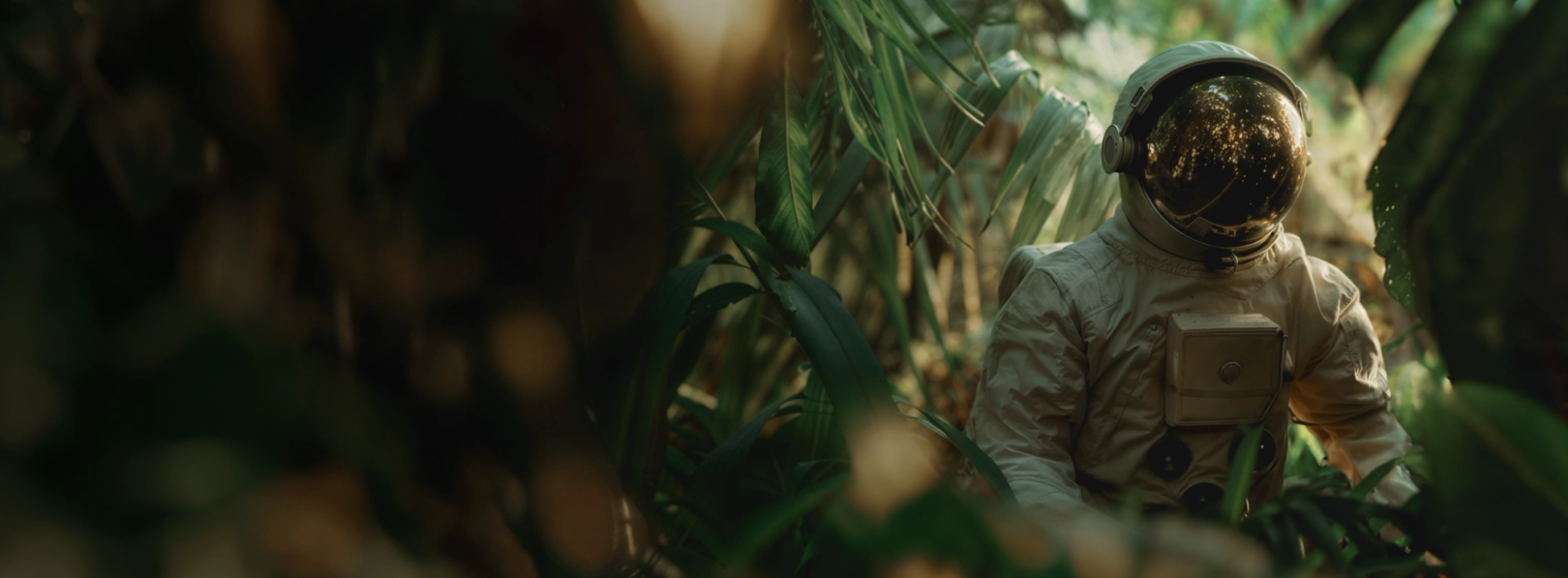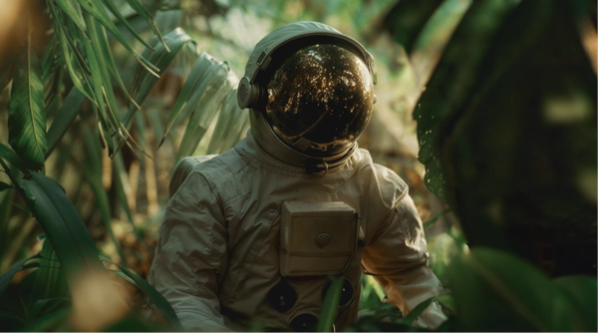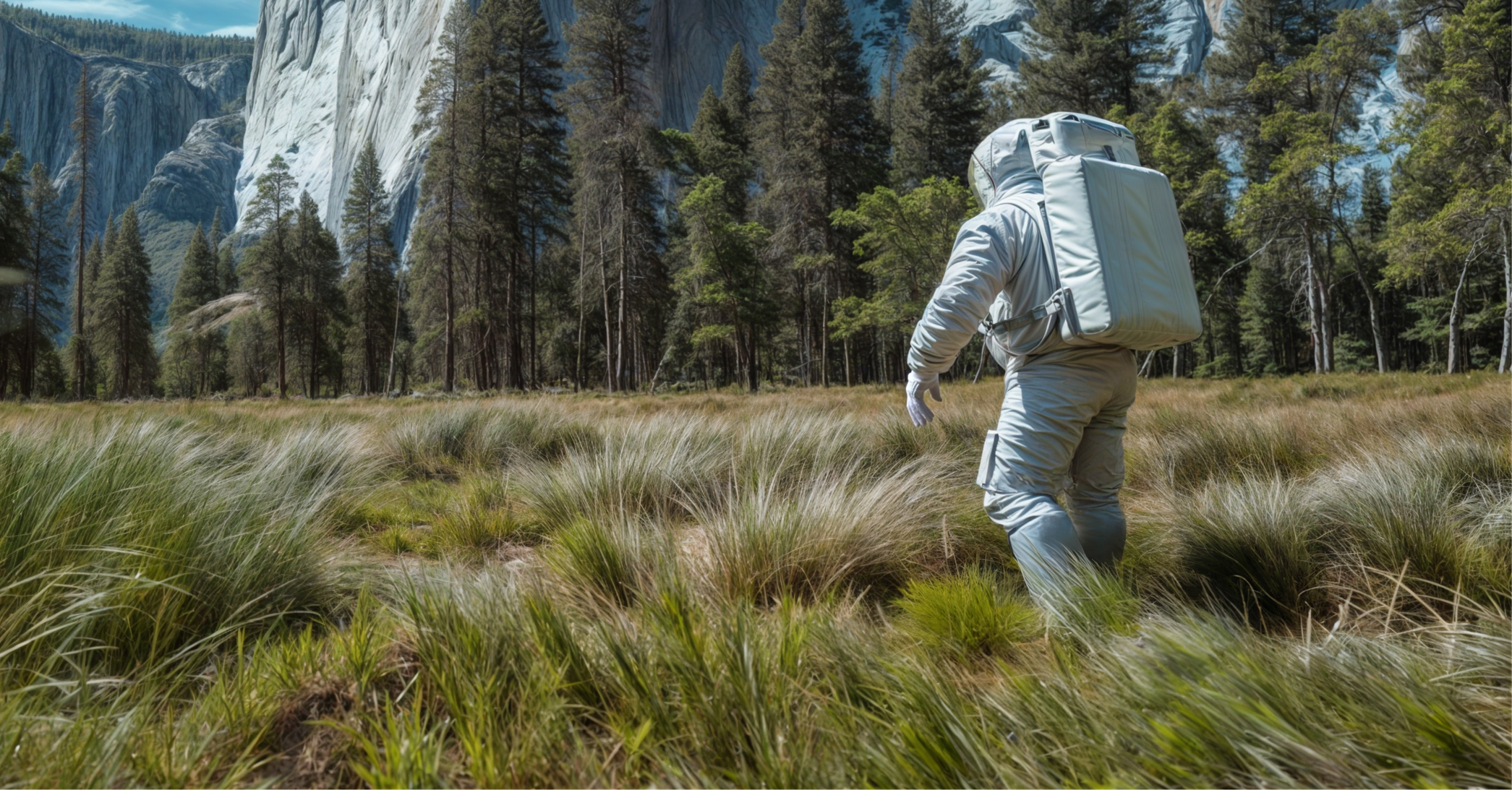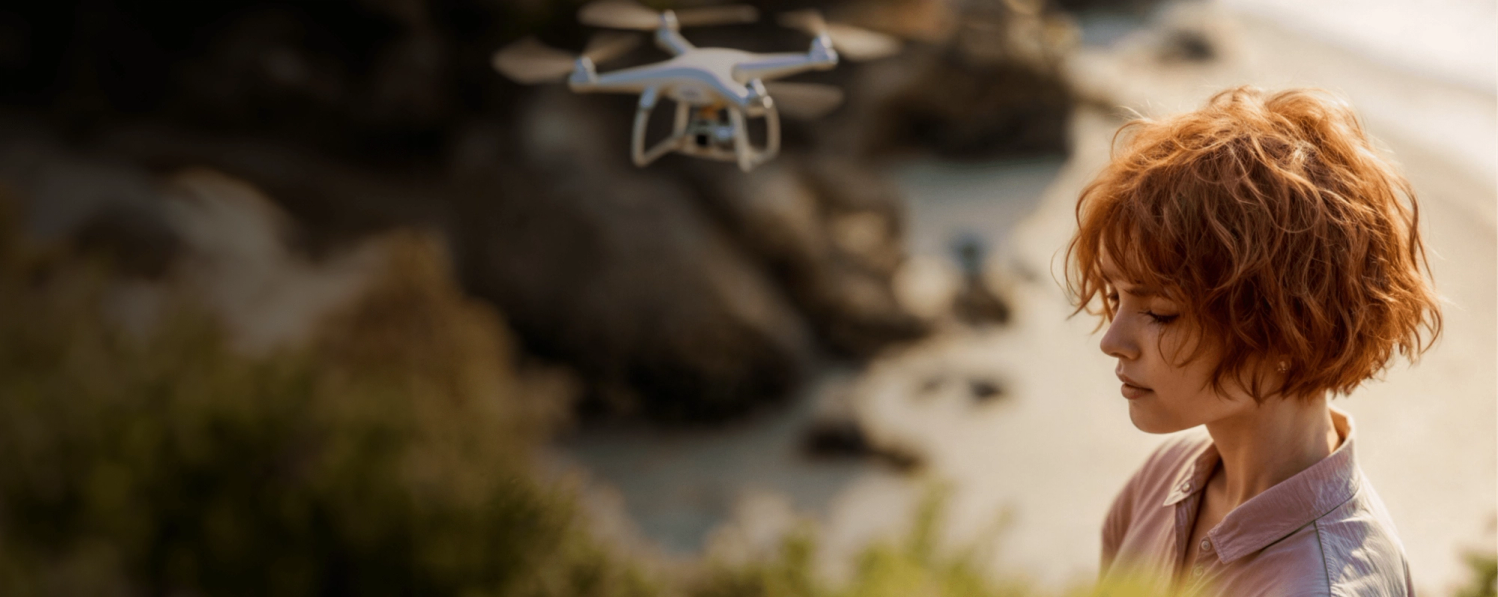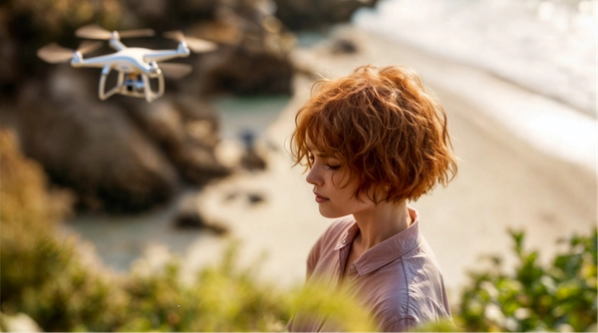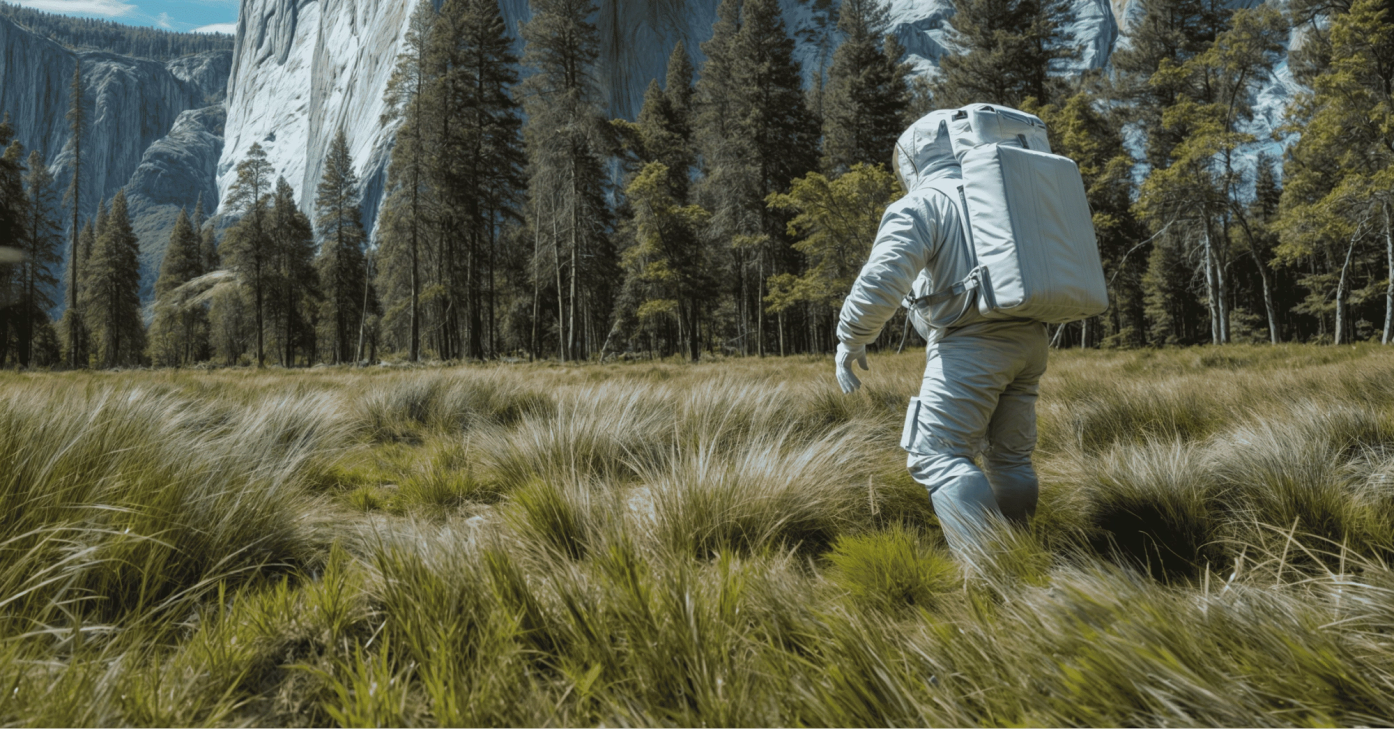The Generative AI Statistics Shaping Marketing & Creative in 2024

AI isn't a trend. It's here to stay. In fact, there are more online searches for AI-related topics than for Taylor Swift. Recognizing generative AI's transformative impact, marketing and advertising have the highest adoption rates. How's this taking shape and what's happening right now? This article brings together several major studies alongside Superside's own data from completing more than 500 AI-Enhanced Creative projects and poll results from our recent AI summit, The Infinite Canvas, to recap the current statistics reflecting the state of AI adoption among marketers and creatives.
Think AI is just a trend?
The truth is, you can deny it all you want, but AI is here to stay. The global market value for generative AI is expected to reach nearly $137 billion by 2030. One of the main drivers of this growth is content and creative applications. Key players like Microsoft, OpenAI, Google, Adobe, Anthropic, Midjourney, Jasper and Synthesia are leading the way.
The marketing and advertising industry has the highest levels of AI adoption in the workplace. It’s also predicted that generative AI will trump all other technological innovations in terms of productivity gains. No matter how transformative steam power, electricity or the rise of the internet were, AI says, “Hold my hat.”
While these high-level facts are informative and helpful, what everyone really wants to know is what’s really happening right and how is it impacting marketing and creative professionals?
In this article, we’ll share AI statistics from several key industry surveys and reports, along with insights from primary research gathered at our summit and what we’ve learned from our first 500 AI-Enhanced Creative projects.
Top Generative AI Statistics
Some of the top statistics on AI adoption in marketing and creative services include:
- Generative AI's global market value will be nearly $137 billion by 2030.
- The marketing and creative industry has the highest rate of AI adoption.
- Searches for AI-related topics have increased more than searches for Taylor Swift.
- The top barriers to AI adoption are all human-related.
- Most fears of AI are emotional.
- 75% of people are already using AI at work.
- Nearly half of the people using AI started using it in the last 6 months.
- 94% of business leaders say AI is critical to success.
- 75% of marketers are using AI.
- 83% of creative professionals are using AI.
We’re Definitely in Our AI Era
You really can’t go anywhere without tripping over an AI mention. Even though Taylor Swift is in her era, search trends show even more people have been curious about AI in the past four years. While searches for Taylor increased sixfold, searches about AI went up eightfold.
Is it Gonna be Forever or Go Down in Flames?
Humans vs. machines is just another chapter in the history of good vs. evil that’s existed since humans began painting on caves. The common variable is humans. We’re the ones who record the history and it’s human factors that are writing the story of generative AI adoption.
Speaking on the psychology of change at our hands-on AI summit, Ben Wise and Darren Chiu cited research showing that the top barriers to AI adoption, like education, awareness and skill sets, are all human-related. Furthermore, when we asked attendees if the fear of AI was emotional or rational, 77% said emotional. How’s that for smearing paint and thickening the plot?
Dreaming about the day when you wake up and find that what you're looking for has been here the whole time…
Despite pockets of existential angst, AI’s popularity keeps rising with Microsoft’s Work Trend Index showing that 75% of people are already using AI at work and 46% (nearly half) doing so within the last 6 months.
And, yes, I’ve got all the Taylor Swift references out of my system now. You are now safe to move about the article.
The Business Benefits and Promises of Generative AI
According to Deloitte’s Generative AI Survey, efficiency and productivity are the most desired benefits. Their research has also found that 94% of business leaders say AI is critical to success.
Poll results from our AI summit showed that the top three operational advantages are freeing up time for strategic tasks (40%), reducing workload and stress (35%) and increasing accuracy and consistency (18%).
Generative AI Adoption Trends in Marketing
Salesforce’s survey of marketing professionals shows that 75% of marketers are either experimenting with or have fully implemented AI into their workflows. Interestingly, the performance levels of the respondents directly correlate with their level of AI adoption. The greater the marketing professional’s AI usage, the higher their performance level.
Attendees at our summit said the biggest benefits of using AI in marketing were increased efficiency (66%), better targeting and personalization (19%), cost reduction (9%) and enhanced data analysis (6%).
The areas where they saw the greatest potential impact were content creation (62%), campaign optimization (22%) and predictive analytics (9%).
The biggest barriers to entry were internal skill gaps (31%), integration with existing systems (30%) and data privacy concerns (29%).
Generative AI Adoption Trends in Creative Services
Results from Adobe’s global survey of creative professionals show that 83% of creative professionals use generative AI in their work and 20% say their employers or customers require the use of generative AI design.
Real and anticipated benefits for creatives
The Adobe survey also revealed that 66% of creatives said AI helped them make better content and 58% said it let them make more content. An even higher percentage, 69% felt that generative AI offers new methods for creative expression.
At our summit, 76% of respondents said AI will be essential to creative processes in the next five years.
Top generative AI graphic design tools and use cases
The AI design tool landscape is growing and evolving at a staggering rate. Currently, some of the top tools used by graphic designers for ideation and image creation are Midjourney, Adobe Firefly, Stable Diffusion and ChatGPT. Released in 2022 or 2023, all of these applications are less than two years old, making them infants and toddlers from a human perspective.
While ChatGPT and its paid version, ChatGPT4, are considered conversational AI, many designers use tools like ChatGPT and Claude as brainstorming partners. Basically, you’re tapping into massive data banks outside your own personal AI, aka your brain. In fact, 84% of our summit attendees said that AI was changing the way they approach concepting and ideation.
Other top use cases include image generation, both photorealistic and illustrations for use in expanding brand image and design systems, most specifically for ad and social media creative.
Emerging and future uses for generative AI in graphic design and creative services include, 3D illustration, motion design, short- and long-form video, AR, character design and voice-overs.
Top AI Adoption Challenges
Respondents in the Adobe survey listed quality output and ease of use as the main factors in choosing AI design tools. Attendees at our summit (46%) also indicated that ease of use was a top factor.
In terms of using generative AI to produce creative, attendees at our summit and survey respondents also had concerns over balancing technological innovation with human creativity, such as ensuring that the outputs are original, meet brand and quality standards and respect copyright laws and ethical concerns.
Unlocking the Possibilities of AI-Enhanced Creative
As marketers and creatives look to seize the possibilities of generative AI, they’re also grappling with neverending time and resource pressures. They still have all the responsibilities as before and now they have to figure out how to master this new technology that’s changing faster than a chameleon at a rave.
A proven partner and extension of high-growth teams, Superside has added AI-Enhanced Creative Services to its comprehensive range of creative services. In addition to traditional graphic design, we’re also your shortcut to an AI-powered creative team.
Results from our first 500+ AI-Enhanced creative projects show that we’ve saved our customers more than 17,770 design hours and $1.4 million in design costs. The delivery speed was twice as fast, customer satisfaction was high and projects were up to 60% more efficient.
We’re excited and our customers are excited about what the future holds. To learn more about how we can help you and your team scale creative and fuel growth, book a call. We look forward to getting to know you and answering your questions.
Ex-copywriter turned content strategist with two decades of creative chaos under her belt. She's helped scale content, brands and frozen pies—yes, really. Now? She empowers creatives to work smarter, not smaller.
You may also like these

Milestone: 500+ AI Design Projects Completed & $1.4M+ Design Costs Saved
Just a few months ago, we were writing about what we learned after completing our first 200 creative projects using the latest generative AI tools and guided by the expert hands and minds of world-class creative talent.Now, we’re surprising even ourselves by announcing that Superside has helped its customers leverage AI in more than 500 design projects and counting. In December 2023, we were in the early beta testing phase of our first AI Services and, admittedly, still learning a lot. Now we’re in full-scale mode—officially launching our AI-Enhanced Creative Services and AI Consulting Services to everyone.Speaking of efficiency, enough of this fanfare. Let’s recap the results we’ve seen and the learnings we've revealed along the way.More Than 17,770 Design Hours & $1,400,000 Dollars SavedIn December, we reported savings of 3,700 design hours and $300,000 in design dollars when recapping our first 200+ AI graphic design projects.
Empowering the Future of Creativity: Announcing Superside’s New AI Services
AI is fundamentally transforming how in-house creative teams design their workflows, tell their brand story and grow their business.At our December 2023 AI Summit, 64% of the more than 2,000 attendees were excited about the opportunities AI holds—indicating that brands want to embrace AI as leaders and innovators rather than imitators or followers.However, 85% had concerns about how to use it. Therein lies the rub.AI adoption is a journey. As you move from curiosity to practical applications, loads of questions arise. It’s also a bit of an emotional rollercoaster, taking you from unfettered optimism to full-on analysis paralysis in the blink of an eye.Like any new technology, adopting AI in your teams can be fast and furious at first. It's why we see so many dystopian neon creations dominating our ad spaces and social feeds. It’s easy. AI is good at creating those kinds of graphics but less great at creating remarkable work.
